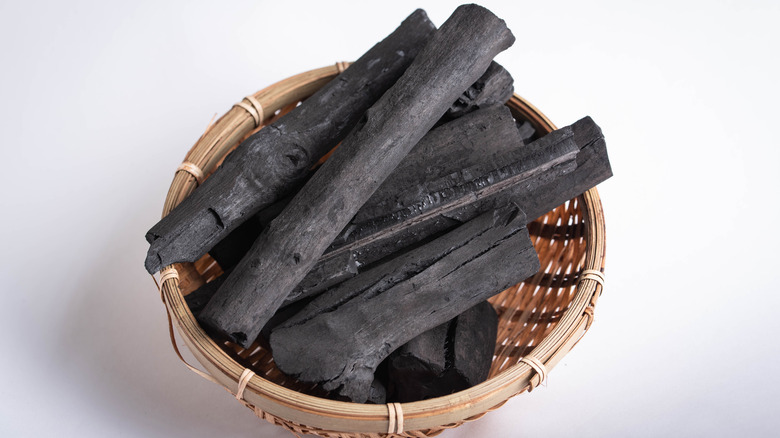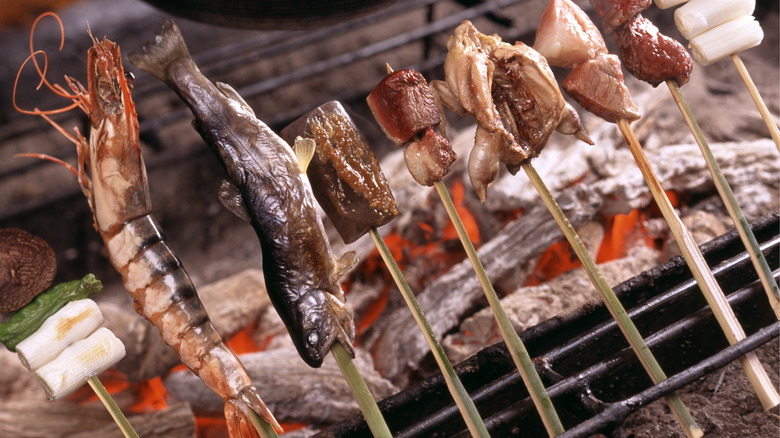The Highly Sought-After Charcoal That Transforms Grilled Foods
Gone are the days when picking up a bag of charcoal meant a simple trip to the supermarket or hardware store for uniformly packaged black briquettes, often pre-soaked in lighter fluid. Grilling is much more sophisticated now, with multiple options such as lump, natural, hardwood, and even coconut shell charcoals. Then there's the ultimate coveted Japanese charcoal bearing the name of binchotan.
Advocates say that binchotan, particularly the most popular version, white binchotan, transforms ordinary grilled foods into extraordinary feats of barbecue glory. It's pricey and often elusive, but the high-heat capacity of this super-strong oak hardwood can quickly caramelize meats and vegetables without pesky puffs of smoke permeating your patio, clothes, and eyeballs.
The all-natural wood is also odor-free and contains no chemical additives, making it one of the most eco-friendly and conscience-soothing options for that grilled flavor we all love. Binchotan facilitates grilling in small spaces and indoor environments regardless of seasonal weather changes, giving those binchotan charcoal recipes added appeal. And because the hardwood gets super hot and stays that way, it can crisp up the food exterior without overcooking the tender inside morsels.
All these superior qualities beg the question: Why isn't everyone using binchotan charcoal? Many people are, especially in Japan, where the technique originated. But a few obstacles or extra steps may hinder the transition for even the most dedicated grillmaster.
Grilling with binchotan charcoal means a lot of heat and precision
If barbecuing food is an art and passion for you, binchotan might be well worth the extra effort. It does take longer to heat the hardwood, so this type of grilling isn't a quick grill toss after a weary day of work or play. But it can be a relaxing, artful way of cooking when time allows. And it reportedly burns for up to six hours, staying hot for even longer.
If you really want to learn the precision of Japanese grilling with binchotan, check out robata grilling, an ancient technique of stacking and organizing hardwood pieces for even heat distribution. Again, patience is golden; you won't be plopping down some square briquettes and squirting with lighter fluid. The pieces are typically irregular in shape and thickness, so it might be a mesmerizing Zen-like challenge to create a harmonious fire stack.
Binchotan deserves extra attention, especially when the process of making it takes consistent hands-on tending. With temperature controls and expert refining techniques, the wood becomes carbonized and structurally altered for a variety of uses.
As you can imagine, all this raises the cost of the beloved grilling hardwood. It also cuts down on accessibility outside of Japan, but online shopping broadens the options. Another way to reduce cost is to experiment with charcoal blends, using hardwoods such as mesquite alongside the treasured white binchotan. A bit of charcoal yin and yang might just create your own version of robata grilling.

